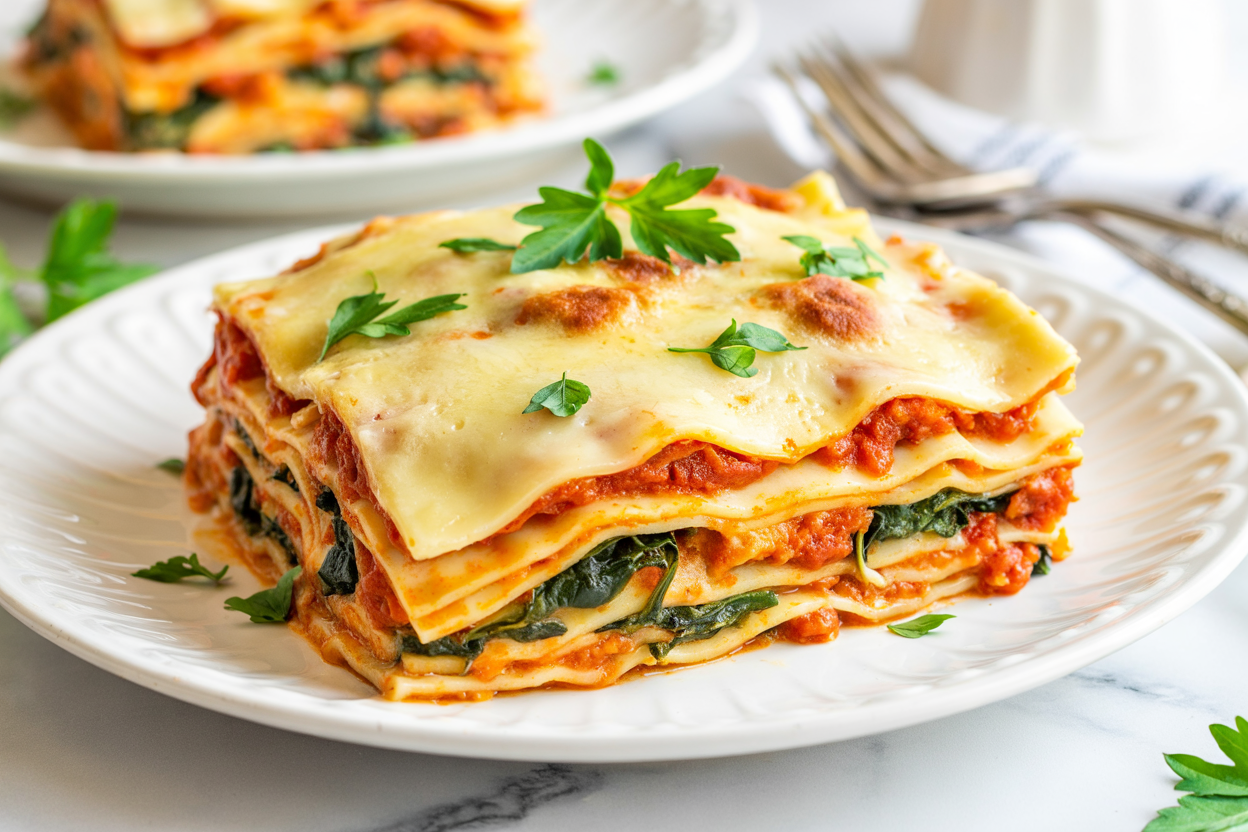Introduction:
Peas are a beloved vegetable in many home gardens, known for their sweet flavor and nutritional value. One challenge gardeners often face when growing peas is providing adequate support for them to climb and thrive. In this article, we will explore 15 creative and practical DIY pea trellis ideas that will keep your peas happy and climbing to their heart’s content. Whether you have limited space, a tight budget, or simply enjoy getting creative in the garden, there is sure to be a trellis idea here that suits your needs. Let’s get started and give your peas the support they need to reach new heights!
1. Mini Sugar Snap Pea Trellis
Building a mini trellis for your sugar snap peas is a great way to support their growth and ensure a bountiful harvest. To create a simple trellis, you can use bamboo stakes or wooden dowels arranged in a teepee shape and tied together at the top. As your sugar snap peas grow, gently guide the vines to climb up the trellis, helping them stay upright and maximizing sunlight exposure. This will not only help prevent the plants from getting tangled or damaged but also make harvesting easier. With a mini trellis, you can enjoy fresh and delicious sugar snap peas straight from your garden all season long.
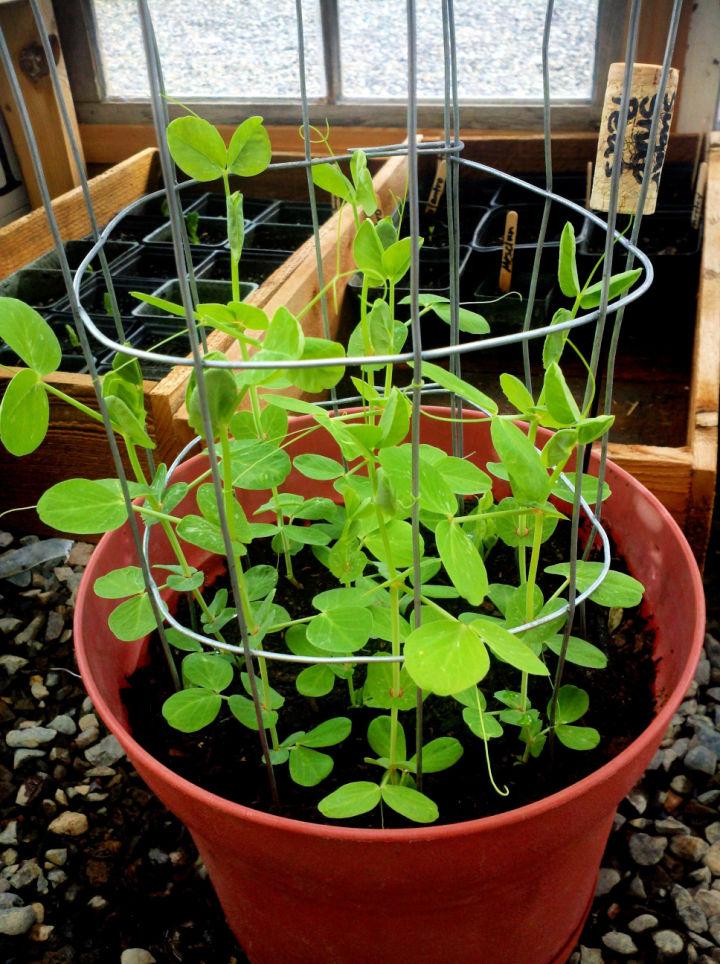
source: fabulesslyfrugal.com
2. How to Build a Pea Trellis
Building a pea trellis is a simple and effective way to support your growing pea plants and help them reach their full potential. To build a pea trellis, start by placing a row of stakes or posts along the length of your pea plants. Then, attach a piece of sturdy netting or wire mesh to the stakes, making sure it is securely fastened and at a height that will allow the pea plants to climb as they grow. As the pea plants begin to vine, gently guide them towards the trellis to encourage upward growth. Regularly check and adjust the trellis as needed to provide proper support throughout the growing season. By building a pea trellis, you can help your pea plants thrive and produce a bountiful harvest.
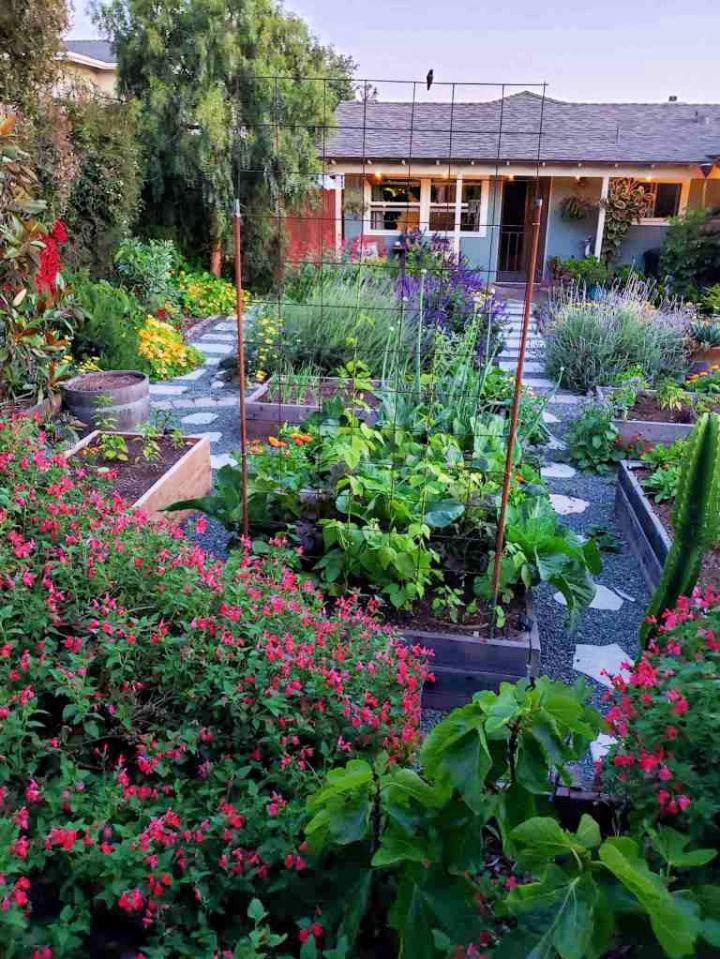
source: homesteadandchill.com/
3. DIY Pea Trellis
Creating a pea trellis for your garden is a simple and cost-effective way to support your growing pea plants. Start by setting up two wooden or metal posts at each end of the pea row. Then, attach a sturdy wire or string horizontally between the posts at various heights to provide support for the peas to climb as they grow. You can also use bamboo poles or even repurpose old materials like wooden pallets to construct a trellis. This DIY project not only helps your pea plants thrive but also adds a decorative element to your garden.
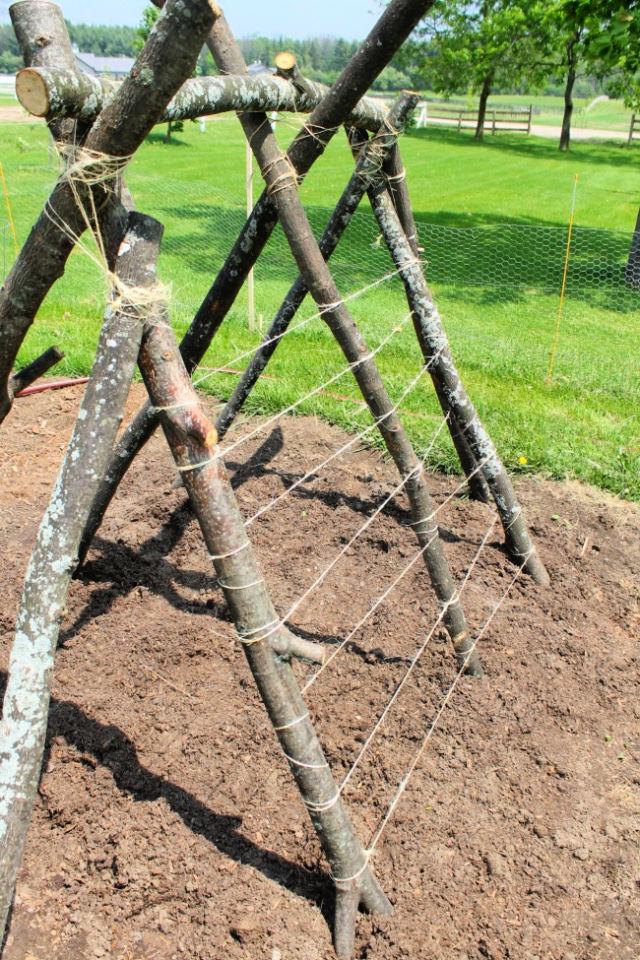
source: howweelearn.com
4. Pea Trellis Made from Tomato Cage
For a quick and easy way to support your pea plants as they grow, consider using a tomato cage as a trellis. Simply turn the tomato cage upside down and place it over your pea plants, allowing them to climb and grow along the vertical wires. This DIY trellis is a cost-effective solution that provides sturdy support for your plants and helps keep them off the ground, reducing the risk of disease and pests. Plus, it’s easy to set up and can be reused season after season.
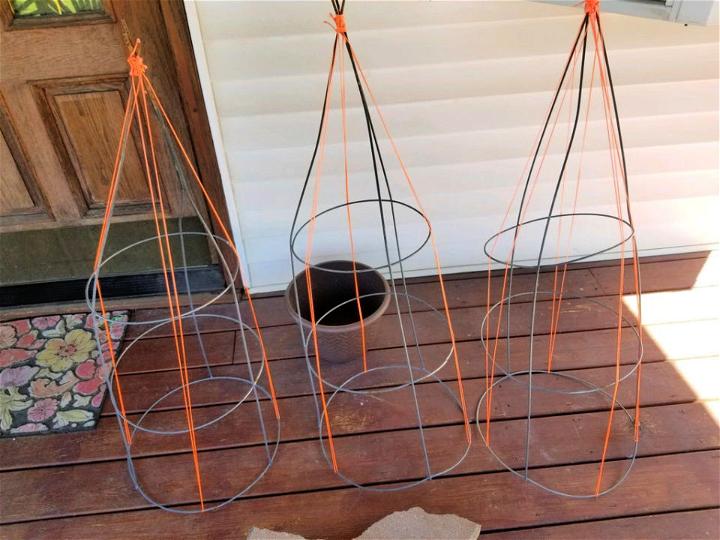
source: instructables.com
5. Build Your Own Trellis
Building your own trellis is a great way to add a functional and decorative element to your garden or outdoor space. By constructing a trellis, you can provide support for climbing plants like vines, flowers, and vegetables, while also creating an attractive focal point. Trellises can be made from a variety of materials, such as wood, metal, or even recycled items like old ladders or branches. You can customize the size and design of your trellis to suit your space and style, making it a fun and creative DIY project. Whether you’re a seasoned gardener or just starting out, building your own trellis is a satisfying and rewarding endeavor that can enhance the beauty and productivity of your garden.
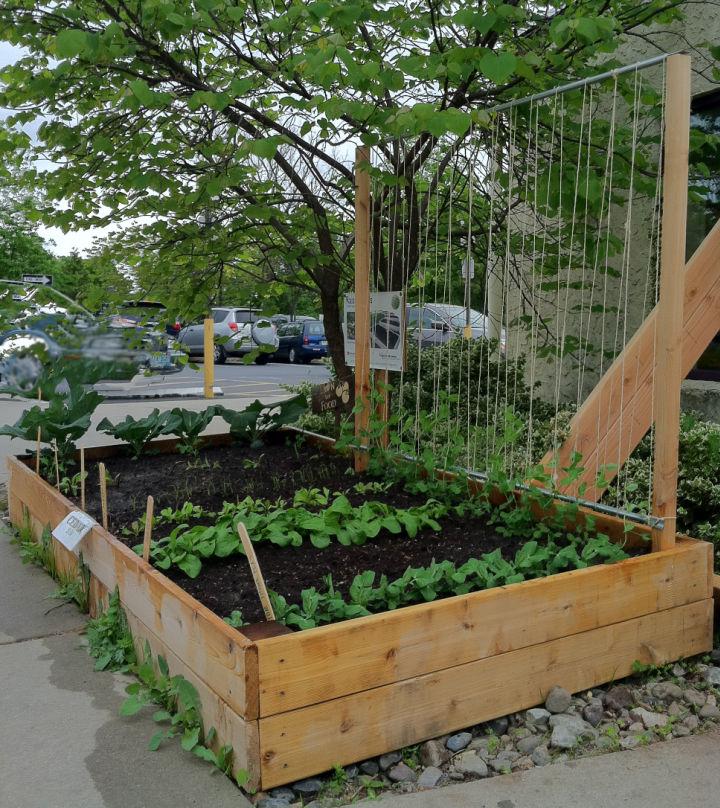
source: bountifulboxes.com
6. Bean Trellis for Raised Garden Beds
Adding a trellis to your raised garden beds can be a great way to maximize space and increase the yield of your bean plants. By growing beans vertically, you can prevent them from sprawling out and taking over your garden. A trellis can also help keep the beans off the ground, reducing the risk of pests and diseases. When choosing a trellis for your raised garden bed, consider the height and strength of the structure to support the weight of the bean plants as they grow. With a well-designed bean trellis, you can create a visually appealing garden while increasing the productivity of your bean harvest.
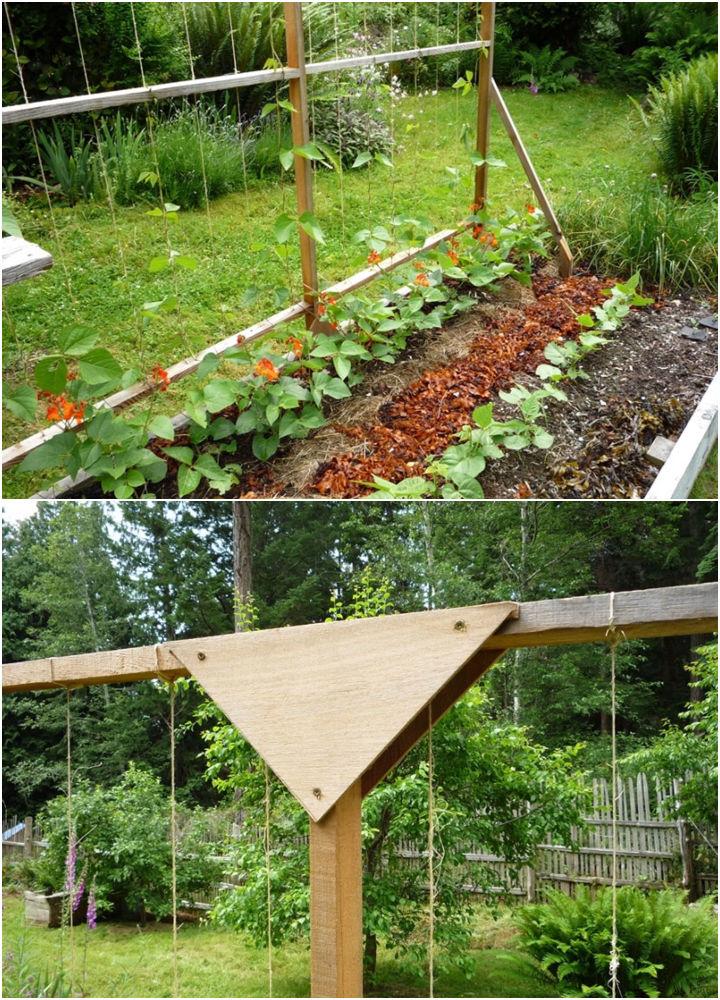
source: learn.eartheasy.com
7. DIY Branch Pea Trellis
Creating a pea trellis using branches is a simple and cost-effective way to support your plants as they grow. Start by collecting sturdy branches that are about 6 feet long and have smaller side branches for the peas to climb. Push the branches firmly into the ground in a row, leaving about a foot of space between each one. As the peas start to grow, gently guide them to climb up the branches for support. This natural trellis not only provides support for your plants but also adds a rustic and beautiful touch to your garden.
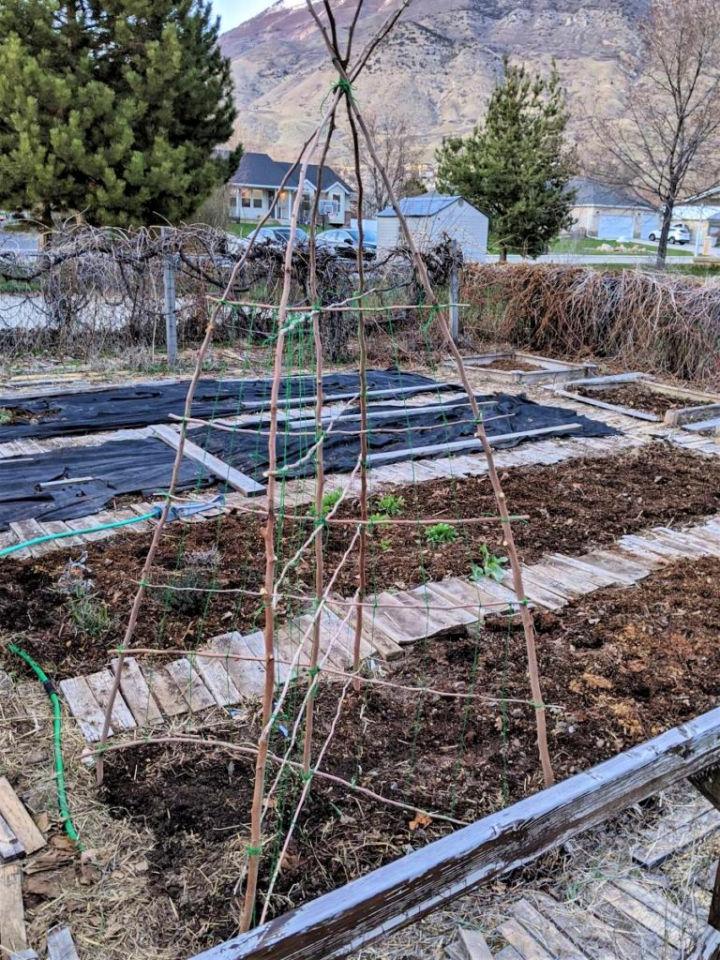
source: dabblehome.com
8. Vegetable Garden Trellis Using PVC
Using PVC pipes to create a trellis in your vegetable garden is a cost-effective and practical way to support your plants as they grow. By building a trellis, you can help plants like tomatoes, cucumbers, and peas thrive and produce more abundant yields. PVC pipes are lightweight, easy to work with, and can be cut to any length needed for your garden. You can create a variety of trellis designs, such as A-frames, teepees, or vertical supports, to fit the needs of different plants. Overall, a vegetable garden trellis using PVC is a versatile and efficient solution for maximizing your garden space and improving plant growth.
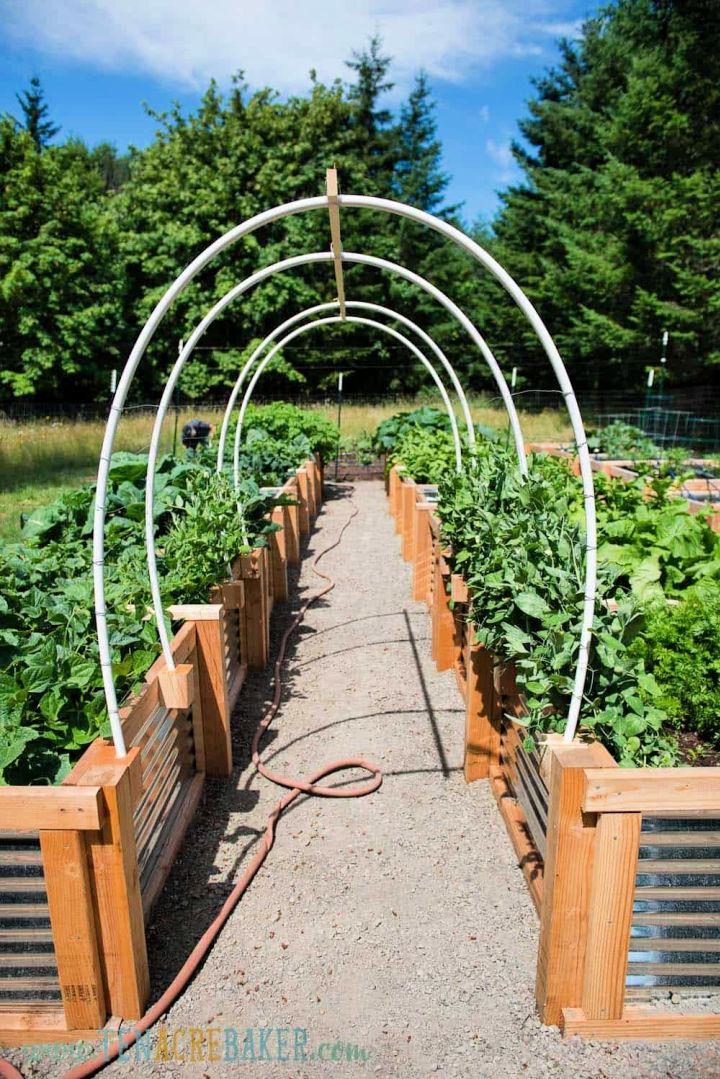
source: tenacrebaker.com
9. Homemade Pea Trellis
Building a pea trellis is a simple and cost-effective way to support your growing pea plants in the garden. Using materials like wooden stakes and twine, you can create a sturdy structure for your peas to climb as they grow. This DIY project not only helps keep your plants organized and off the ground, but it also promotes better air circulation and sunlight exposure. By adding a homemade pea trellis to your garden, you can enjoy a bountiful harvest of fresh and healthy peas throughout the growing season.
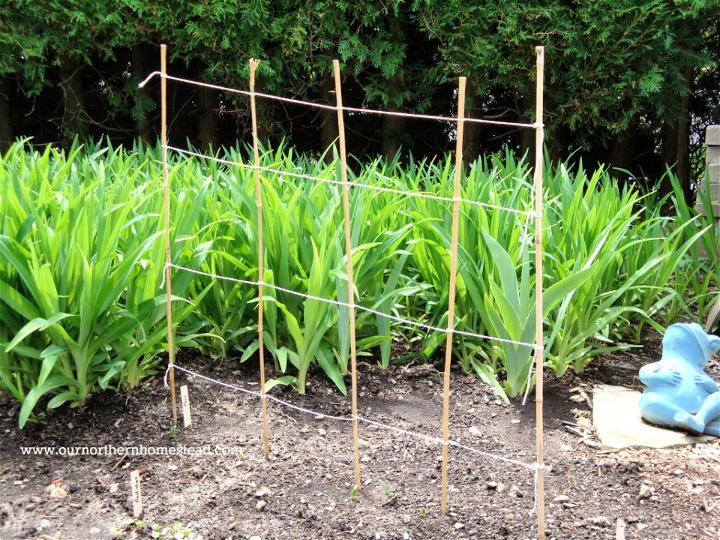
source: ournorthernhomestead.com
10. Folding Pea Trellis Tutorial
If you’re looking to add a trellis for your peas in the garden, a folding pea trellis is a great option. To create this trellis, start by gathering sturdy materials such as wooden stakes and twine. Place the stakes in the ground in a row, leaving enough space in between each one for your pea plants to grow. Then, attach the twine horizontally between the stakes at different heights to provide support for the pea vines to climb. As the peas grow, guide them to climb the twine for a sturdy structure that will keep them off the ground and allow for better air circulation. This DIY project is both functional and space-saving, making it a great addition to any garden.
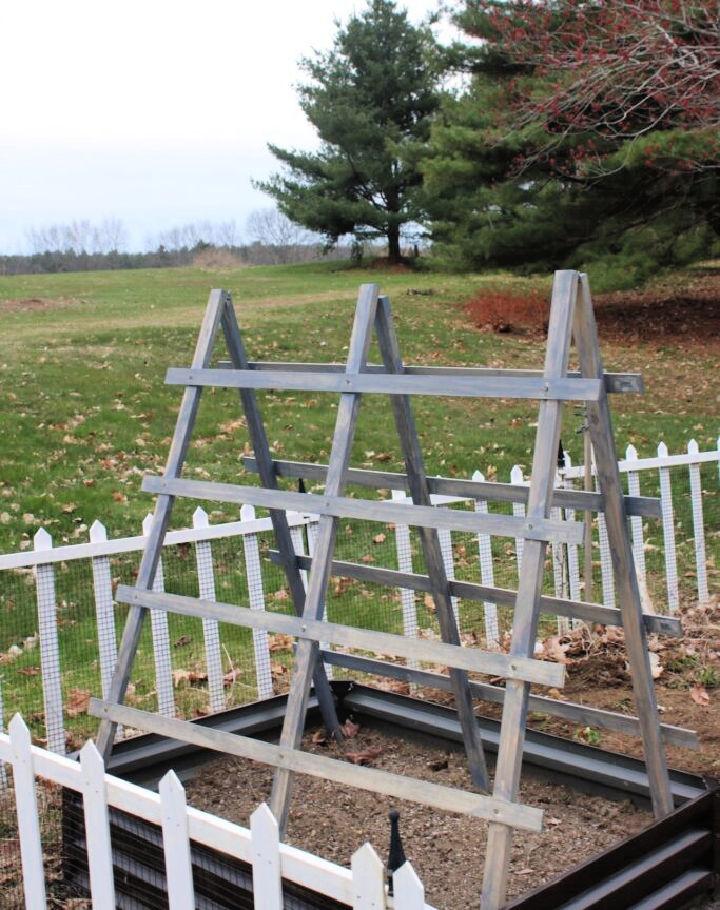
source: cottageonbunkerhill.com
11. Make Your Own PVC Pea Trellises
If you want to support your pea plants and help them grow tall and strong, consider making your own PVC pea trellises. PVC pipes are affordable and easy to work with, making them the perfect material for creating sturdy trellises. Simply cut the PVC pipes to your desired height and width, then connect them using elbow joints to form a trellis shape. Place the trellises in your garden and watch as your pea plants climb and thrive. Not only will these trellises provide support for your plants, but they will also help keep your garden organized and looking neat. Give your peas the support they need with homemade PVC trellises!
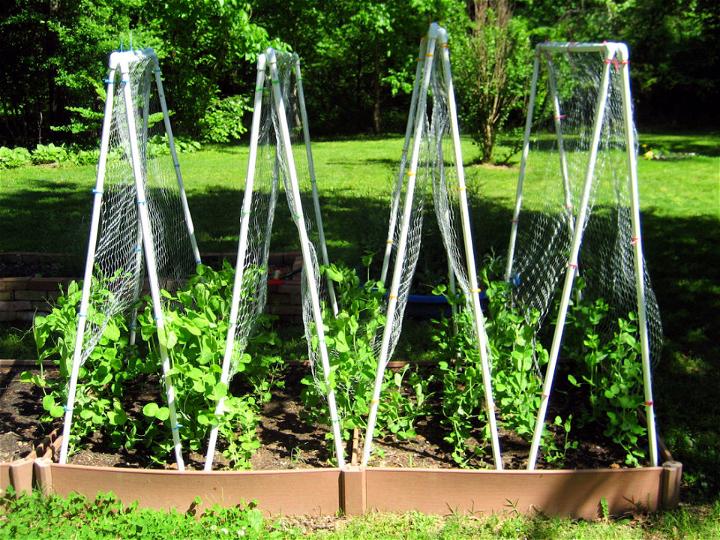
source: survivalpunk.com
12. Make a Sweet Pea Tepee
by creating a charming and functional structure for your garden. To start, gather several bamboo poles and tie them together at the top to form a teepee shape. Plant sweet pea seeds around the base of each pole and guide them to climb up the structure as they grow. The result will be a beautiful and fragrant tepee covered in colorful sweet pea blossoms, creating a whimsical and enchanting addition to your outdoor space.
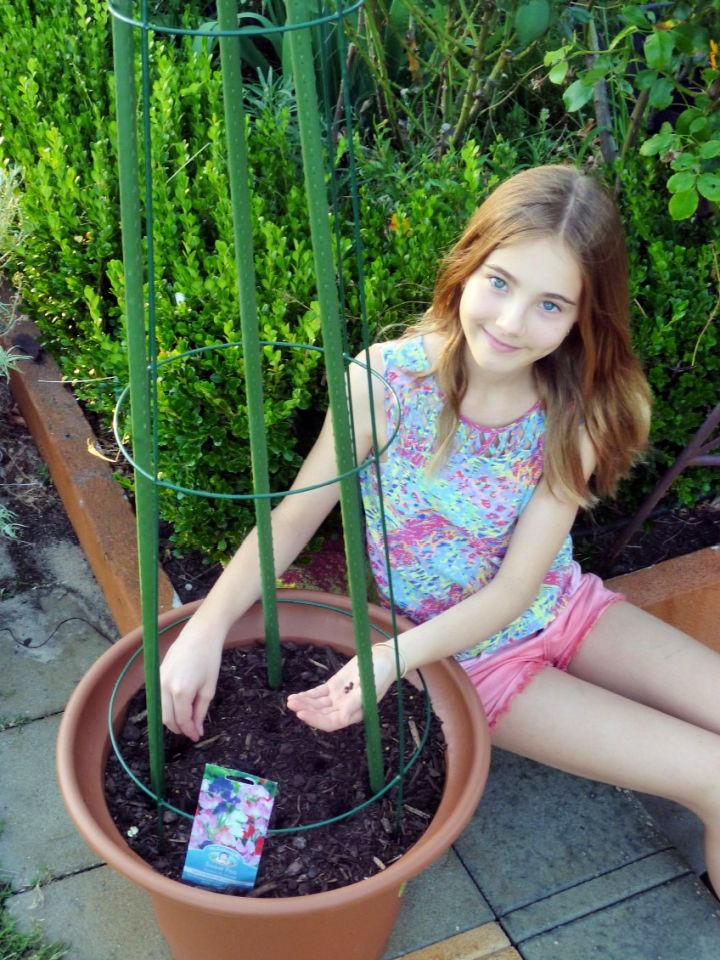
source: gardenclinic.com
13. DIY PVC Garden Trellis
Creating your own garden trellis using PVC pipes is a cost-effective and versatile way to support your climbing plants. With just a few materials and some basic tools, you can easily construct a sturdy trellis that will help your plants grow vertically, saving valuable garden space and promoting healthier growth. PVC trellises are lightweight, weather-resistant, and can be customized to fit the specific needs of your garden. Whether you have limited space or simply want to add a unique touch to your garden, a DIY PVC garden trellis is a great solution for any gardener looking to support their plants in style.
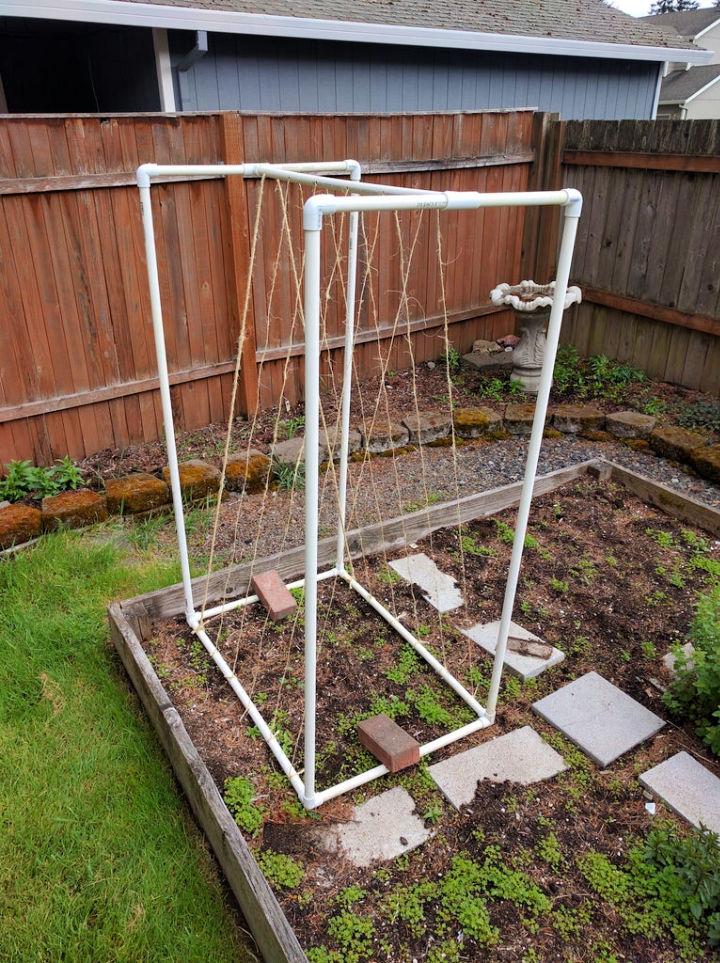
source: instructables.com
14. DIY Snap Pea Trellis
Building a trellis for your snap peas is a fun and practical way to support their growth in the garden. To create a simple trellis, gather some wooden stakes or bamboo poles and some garden twine. Place the stakes in the ground at each end of the row of snap peas, then string the twine horizontally between them at various heights. As the snap peas grow, gently guide the plants to climb the twine, helping them reach their full potential. This DIY trellis not only helps improve air circulation around the plants but also makes harvesting easier. Plus, it adds a charming touch to your garden space!
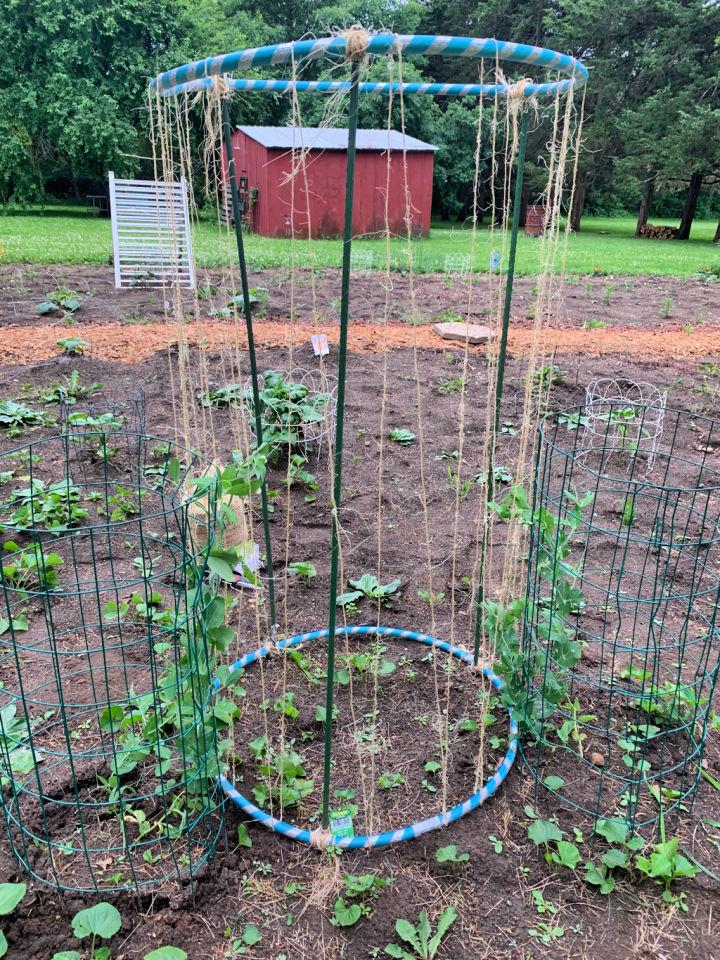
source: thecountrywrensnest.com
15. Homemade Metal Pea Trellis
Create a simple and effective pea trellis using metal fencing or wire mesh. Cut the fencing to the desired height and width, making sure to leave enough space for your peas to climb. Place the trellis along your pea row and secure it in the ground with stakes or by attaching it to a raised bed. As your peas grow, gently train them to climb the trellis, providing support and making it easier to harvest the ripe pea pods. This DIY trellis is a cost-effective and durable solution for growing peas in your garden. Plus, it adds a touch of rustic charm to your growing space.
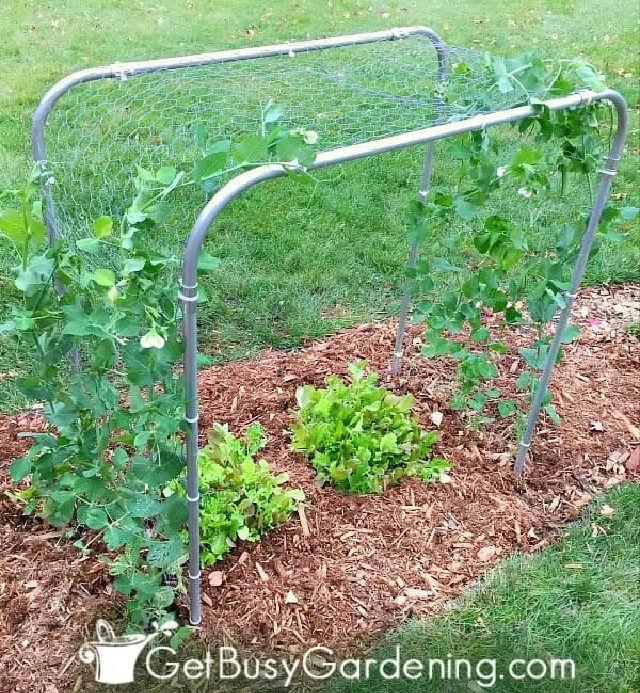
source: getbusygardening.com
FAQ:
1. Why should I use a trellis for my peas?
Answer: A trellis helps peas climb and grow vertically, saving space in the garden and promoting healthier plants.
2. What are some common materials I can use to make a pea trellis?
Answer: Some common materials include bamboo poles, wooden stakes, chicken wire, and twine.
3. How tall should my pea trellis be?
Answer: A pea trellis should ideally be at least 4-6 feet tall to accommodate the growth of climbing pea plants.
4. Can I reuse a pea trellis for multiple growing seasons?
Answer: Yes, with proper care and maintenance, you can reuse a pea trellis for multiple growing seasons.
Conclusion:
When it comes to growing happy, climbing peas in your garden, having a sturdy and attractive trellis is essential. We’ve explored 15 creative DIY pea trellis ideas that are not only functional but also add a touch of charm to your garden space. From using bamboo poles and chicken wire to repurposing old ladders and pallets, there are endless possibilities to support your peas as they reach for the sky. By investing a little time and effort into creating a trellis that suits your garden’s style, you can ensure a bountiful harvest of delicious peas while adding beauty to your outdoor space.



